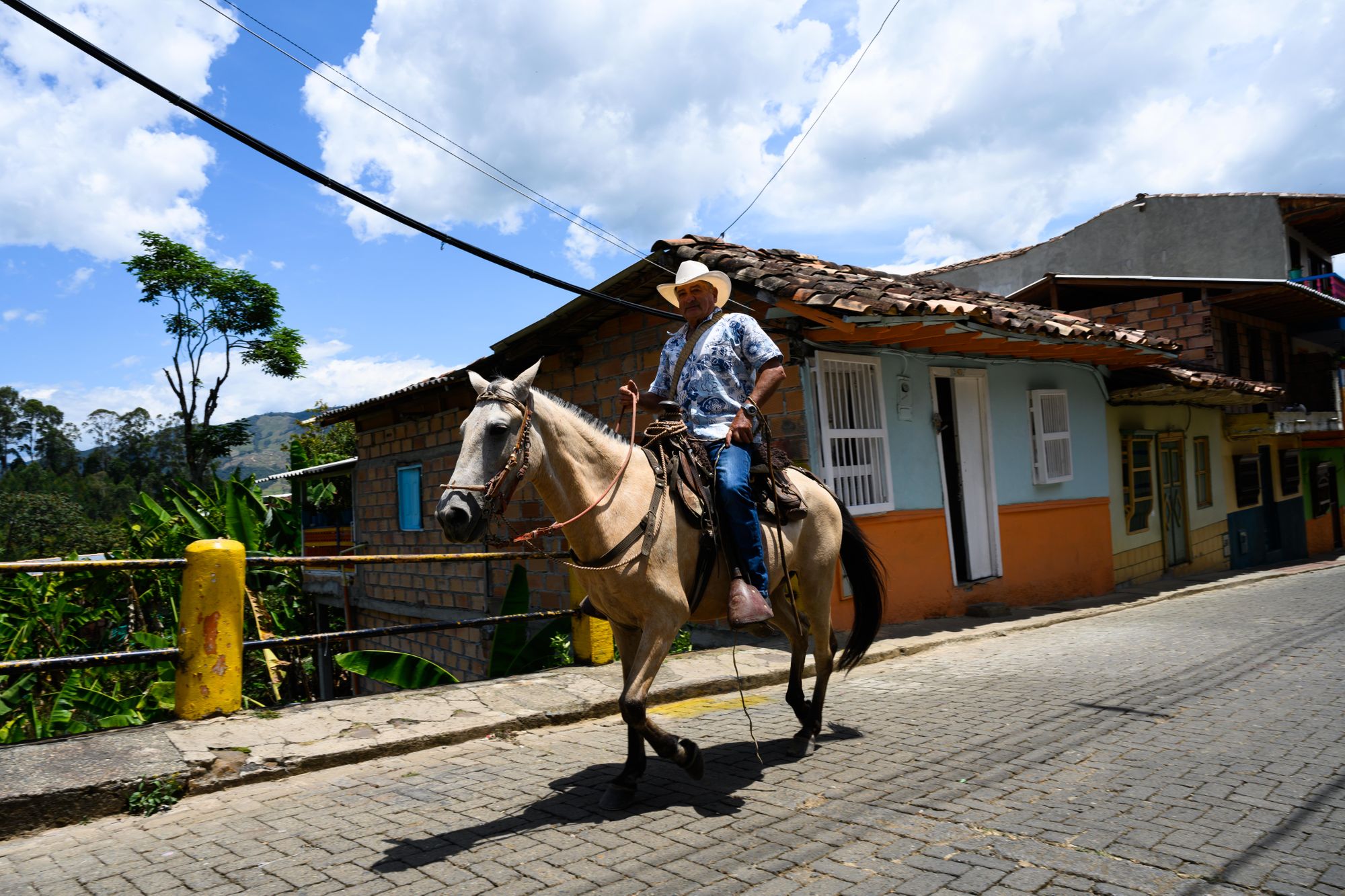Jericó
Jericó is place that's not in the guide books (yet). It's a small rural town in Antioquia province about a four hour bus journey from Medellin. Arriving in the town on a Sunday afternoon we were greeted by local life playing out in full swing. The main square was buzzing with a celebratory atmosphere from the small Sunday market and street eat stalls. The resturants, bars and cafes lining the square were all full with life as the locals took the a day off and visitors from surrounding areas stop by. It was a refreshing welcome after the bussle of Medellin - so much so that as we walked to check into the hotel we already were talking about staying even longer than we planned. We ended up spending five days taking in the town, which gave us time to meet the local characters and admiring the surrounding countryside.
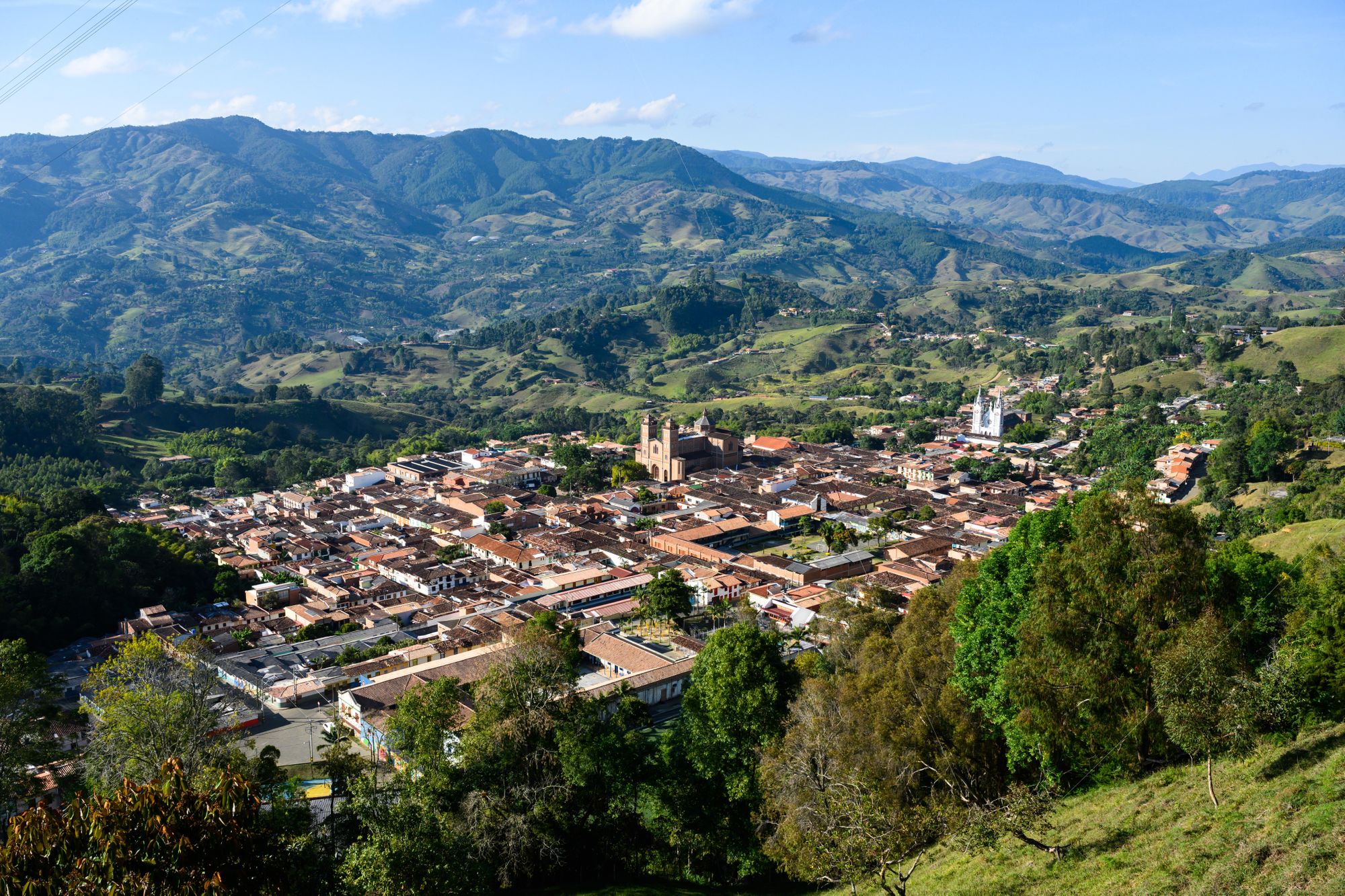
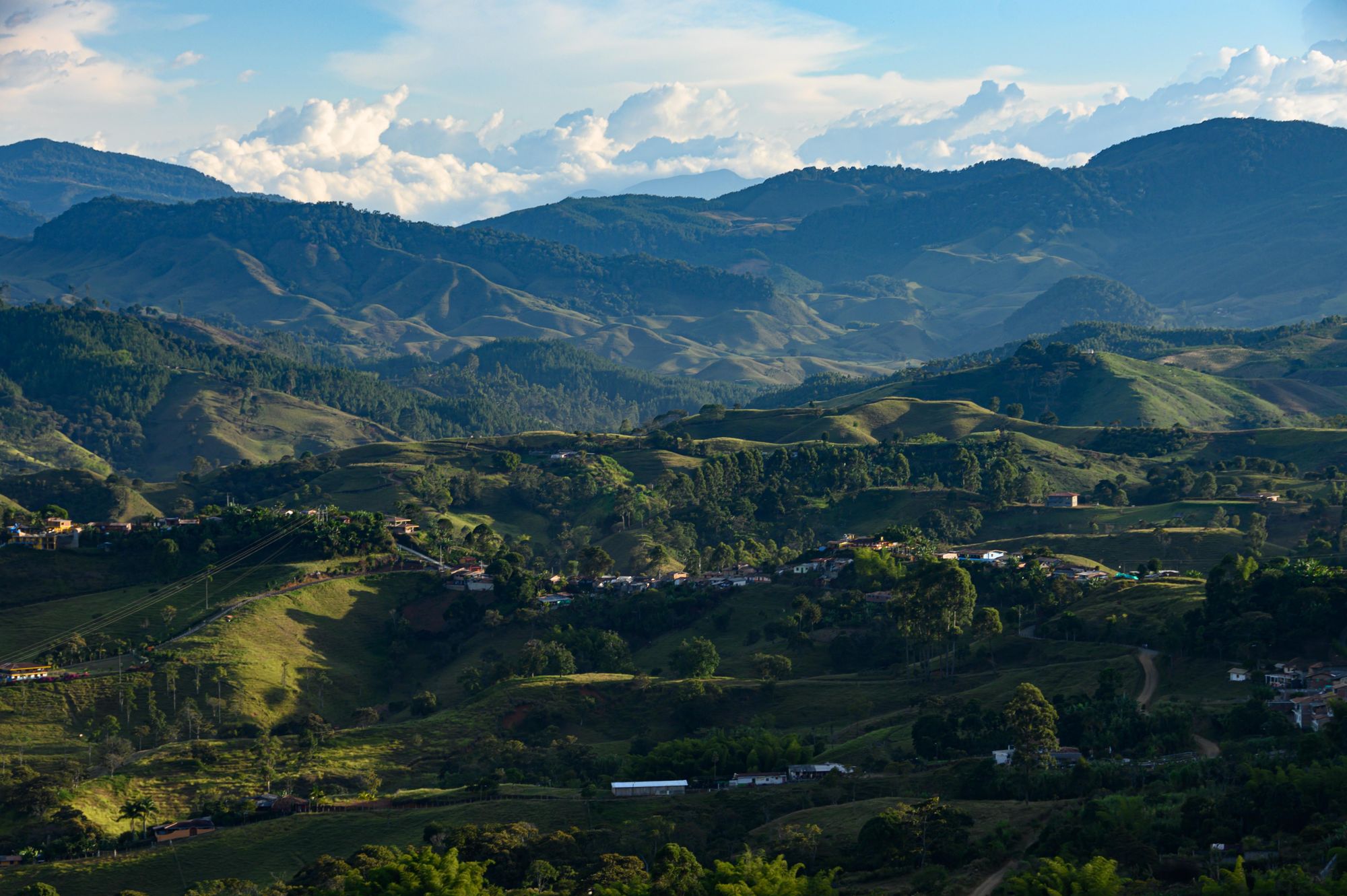

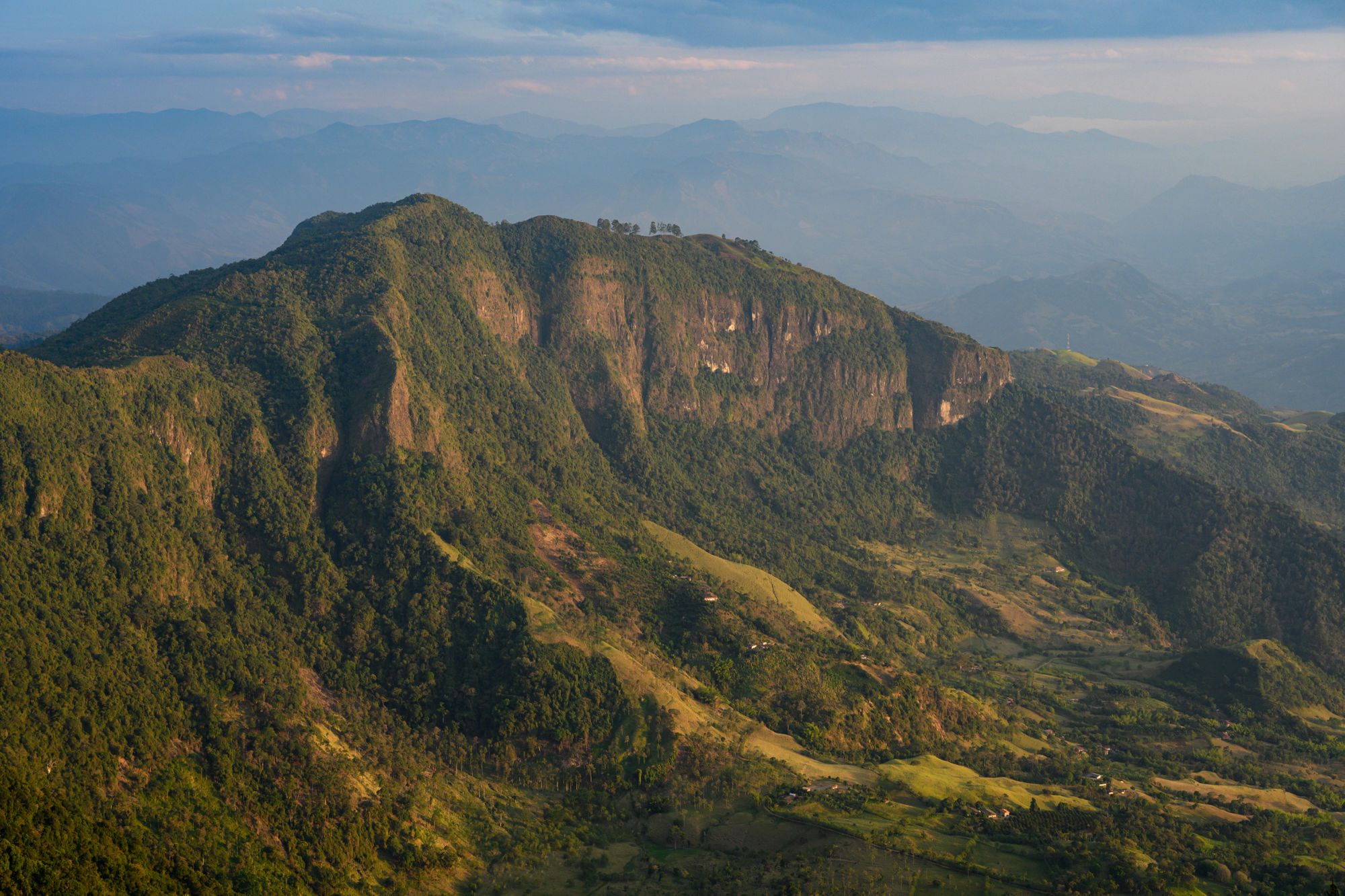
Walking around jerico you can sense the people take pride in their town. From the friendly atmosphere to the colourful streets. An agreement among the residents is that all of the buildings should painted two or three colours, with each household taking part and maintaining their buildings. Walking the streets it is as if the personalities of the residents are painted on their houses.
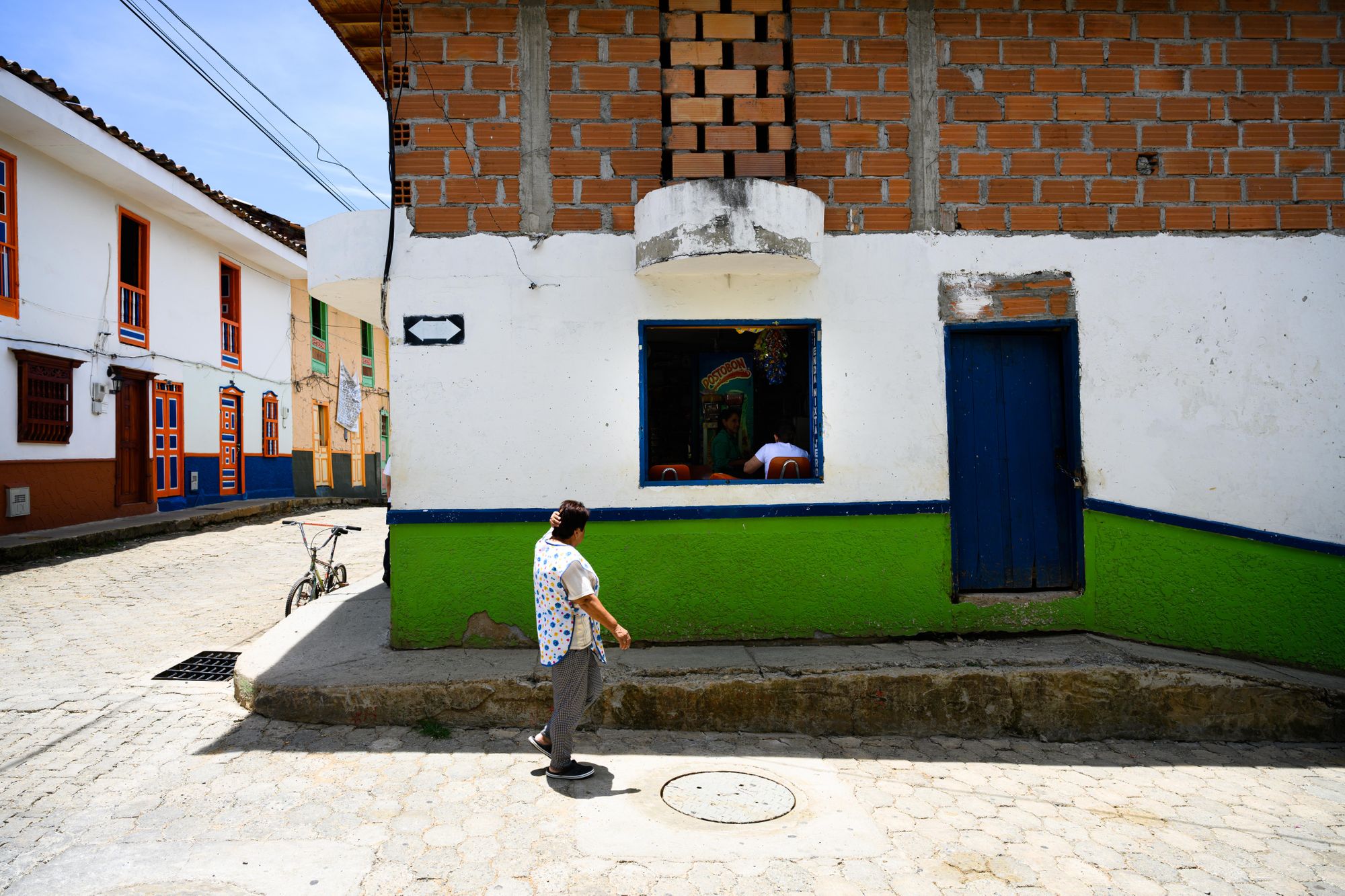

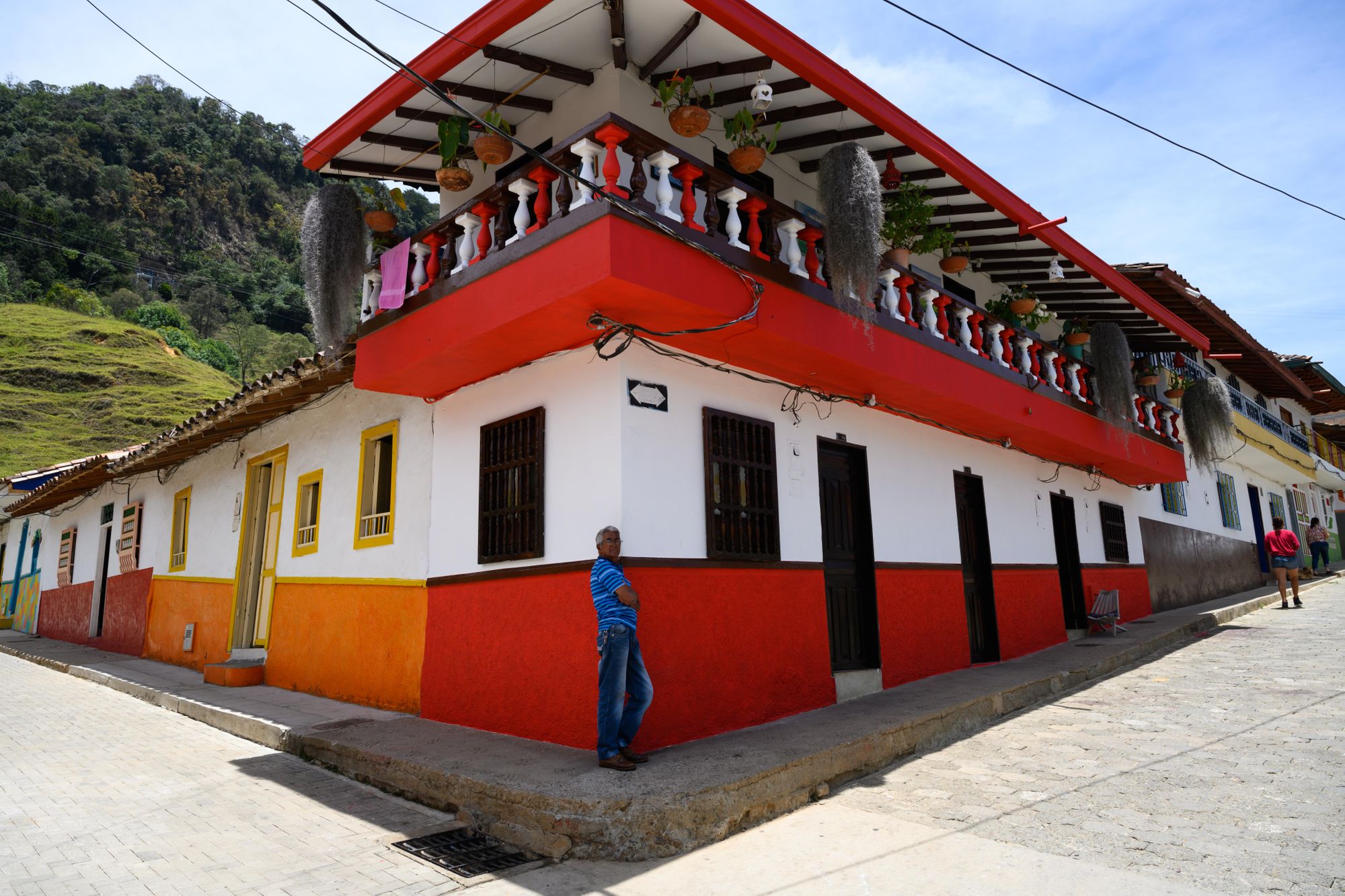

After weaving through the streets and arriving at the town's plaza you'll likely be greeted by the friendly locals that are hanging out in the shade and the curious cowboys that have rode in from their rincos (farms).
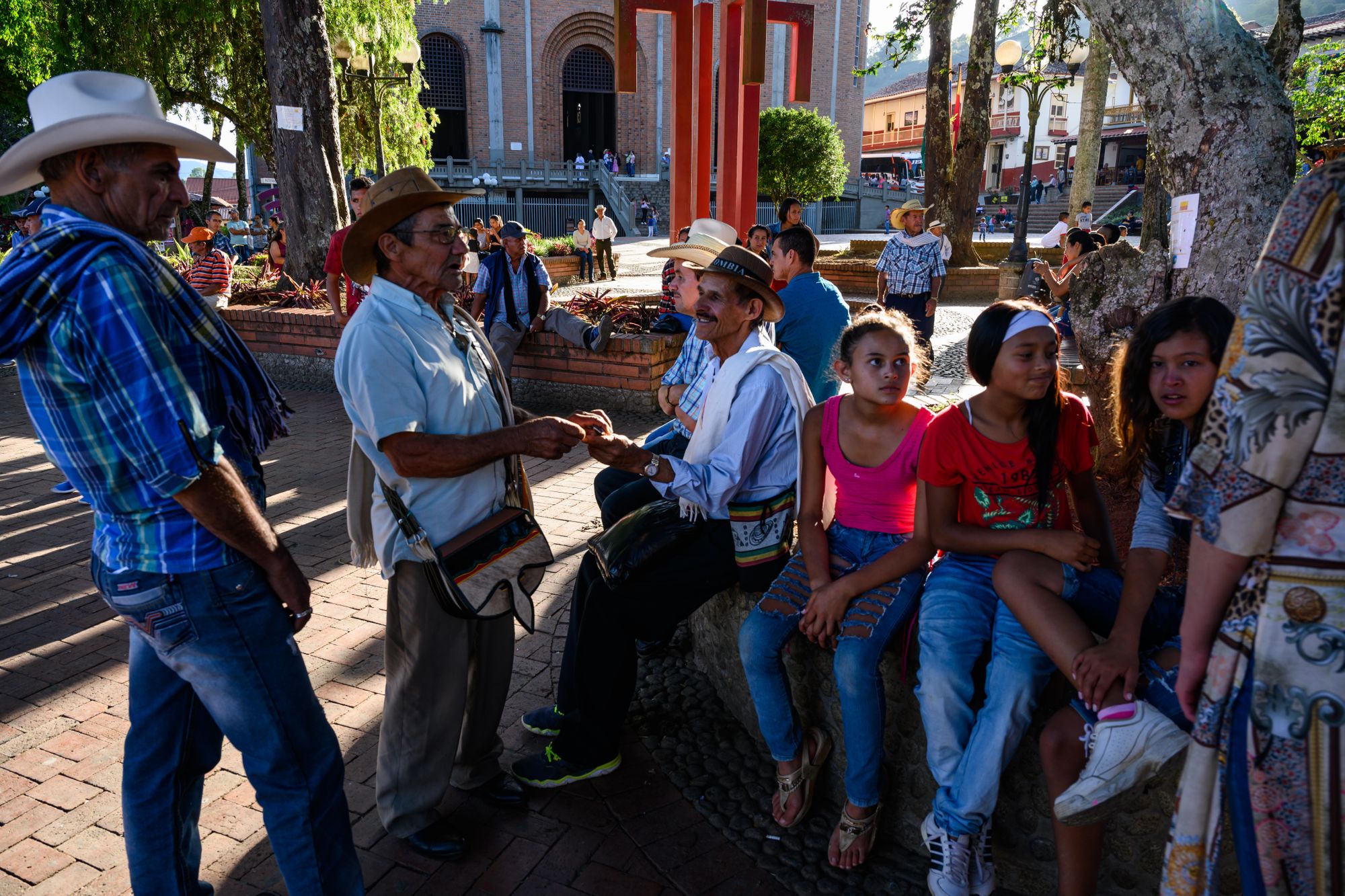
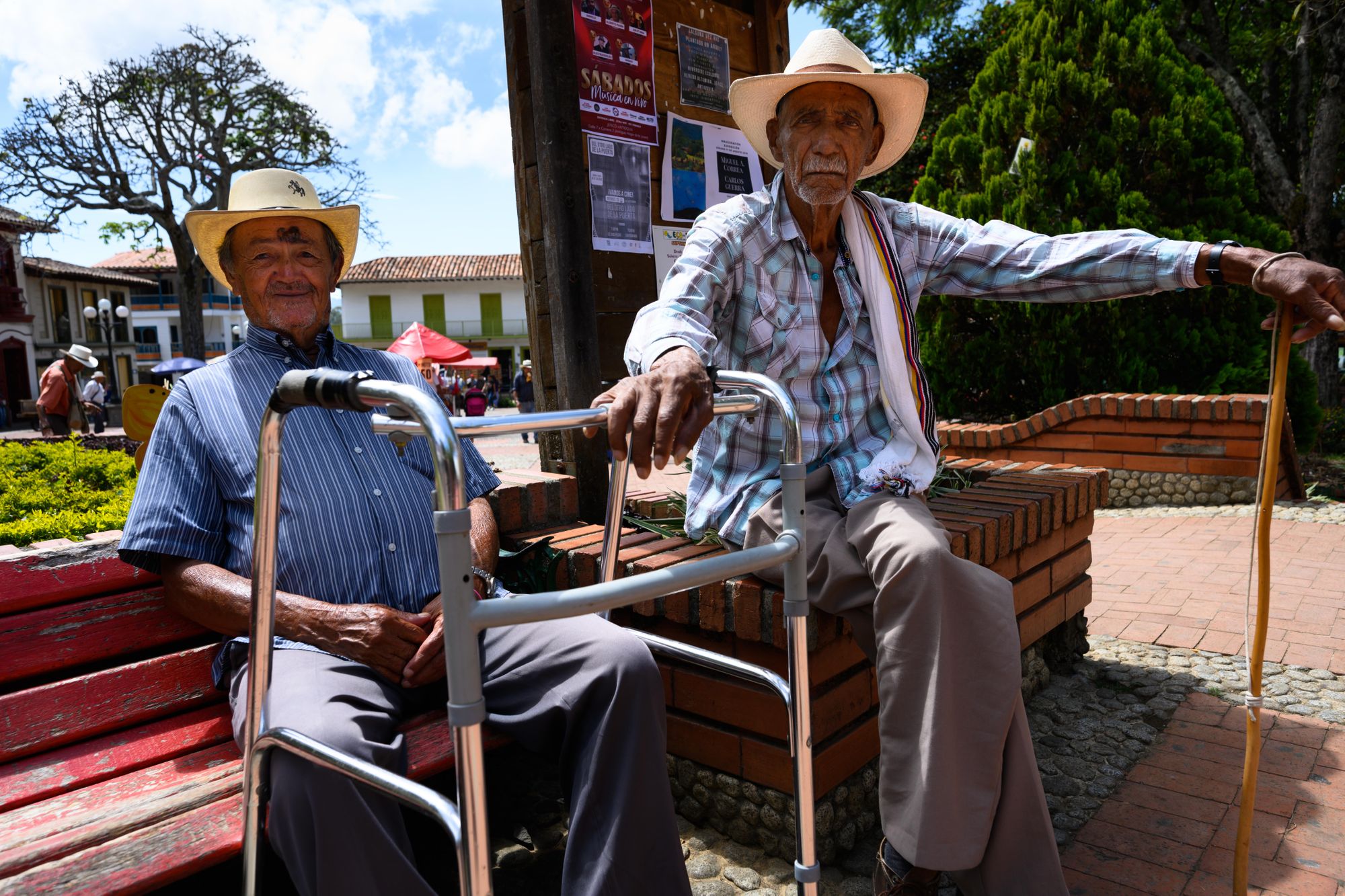
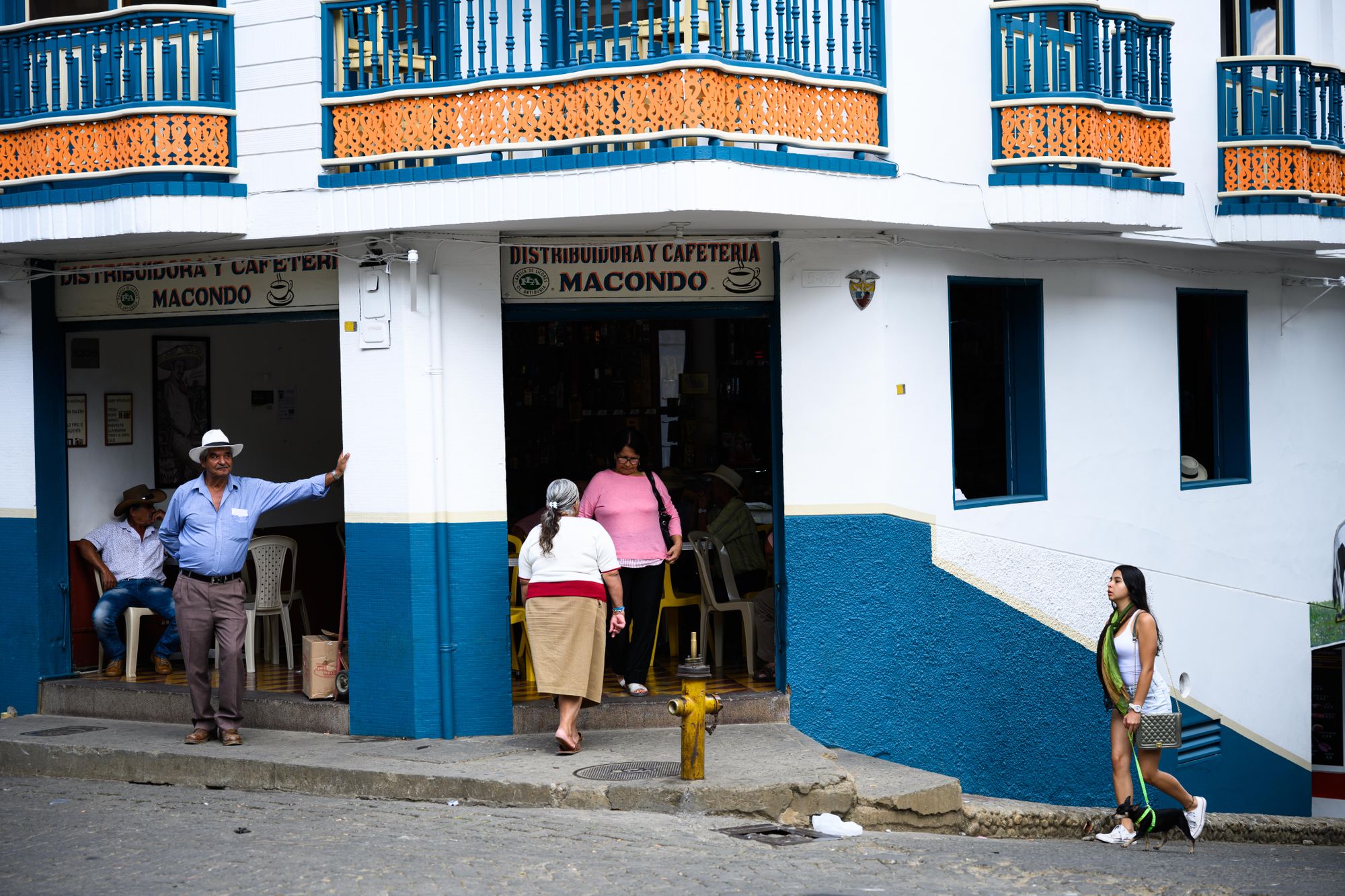
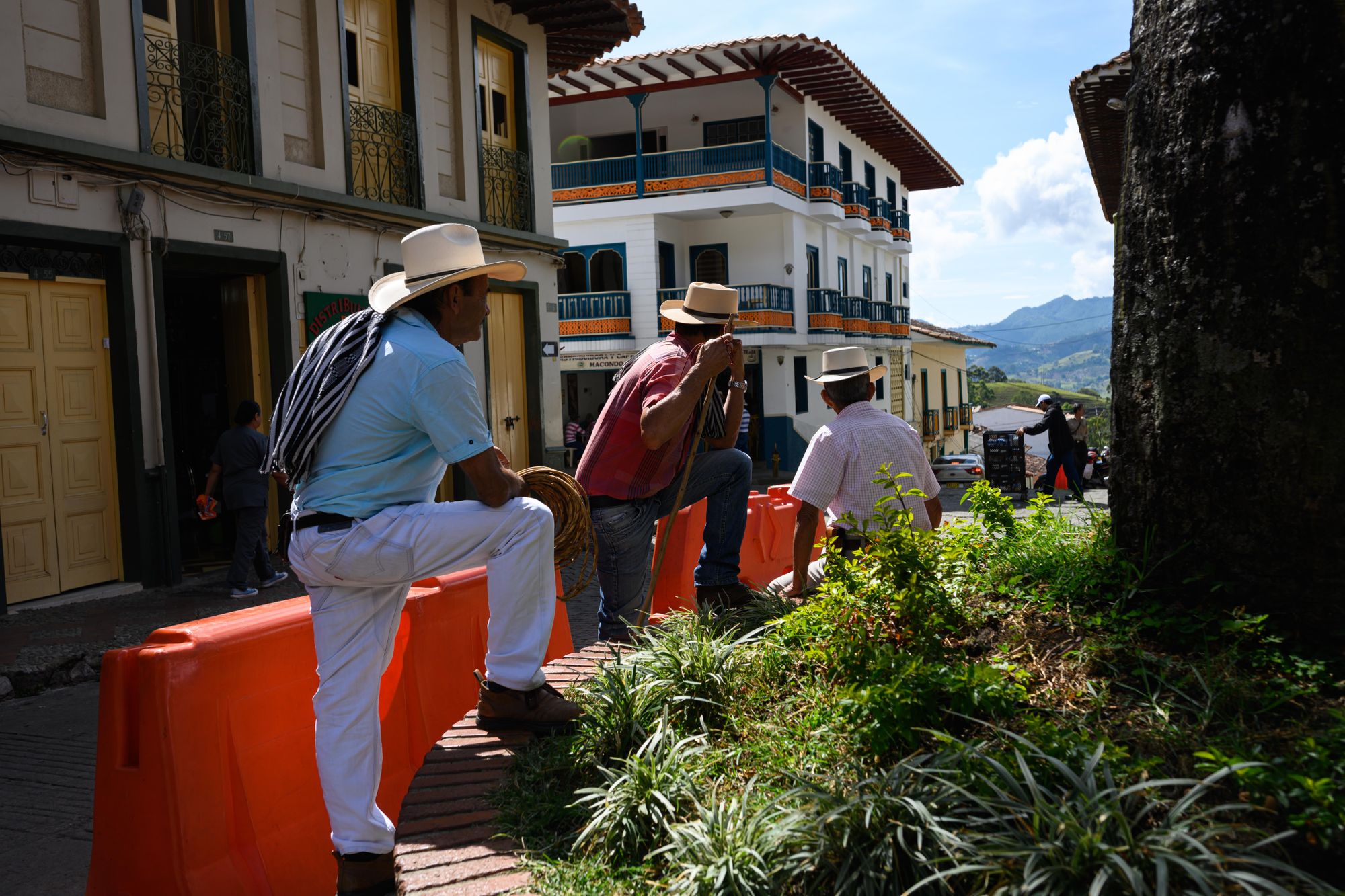
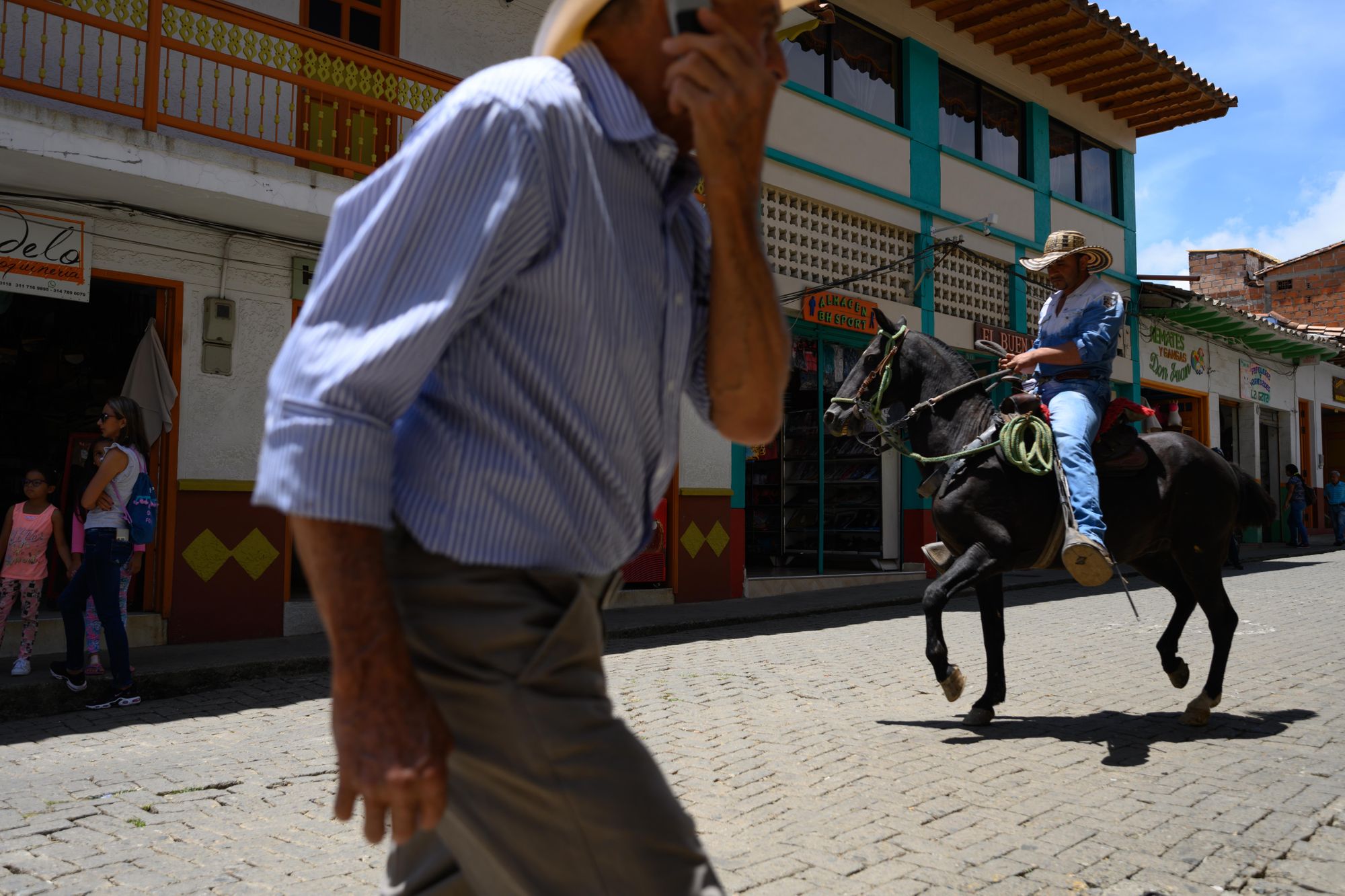
Although the town has a relaxed and laid-back atmosphere, Jerico is a town well known among Colombians for its hand made leather bag called a "Carriel" (see the men wearing these bags below) and the country's first saint, Sister Laura Montoya.
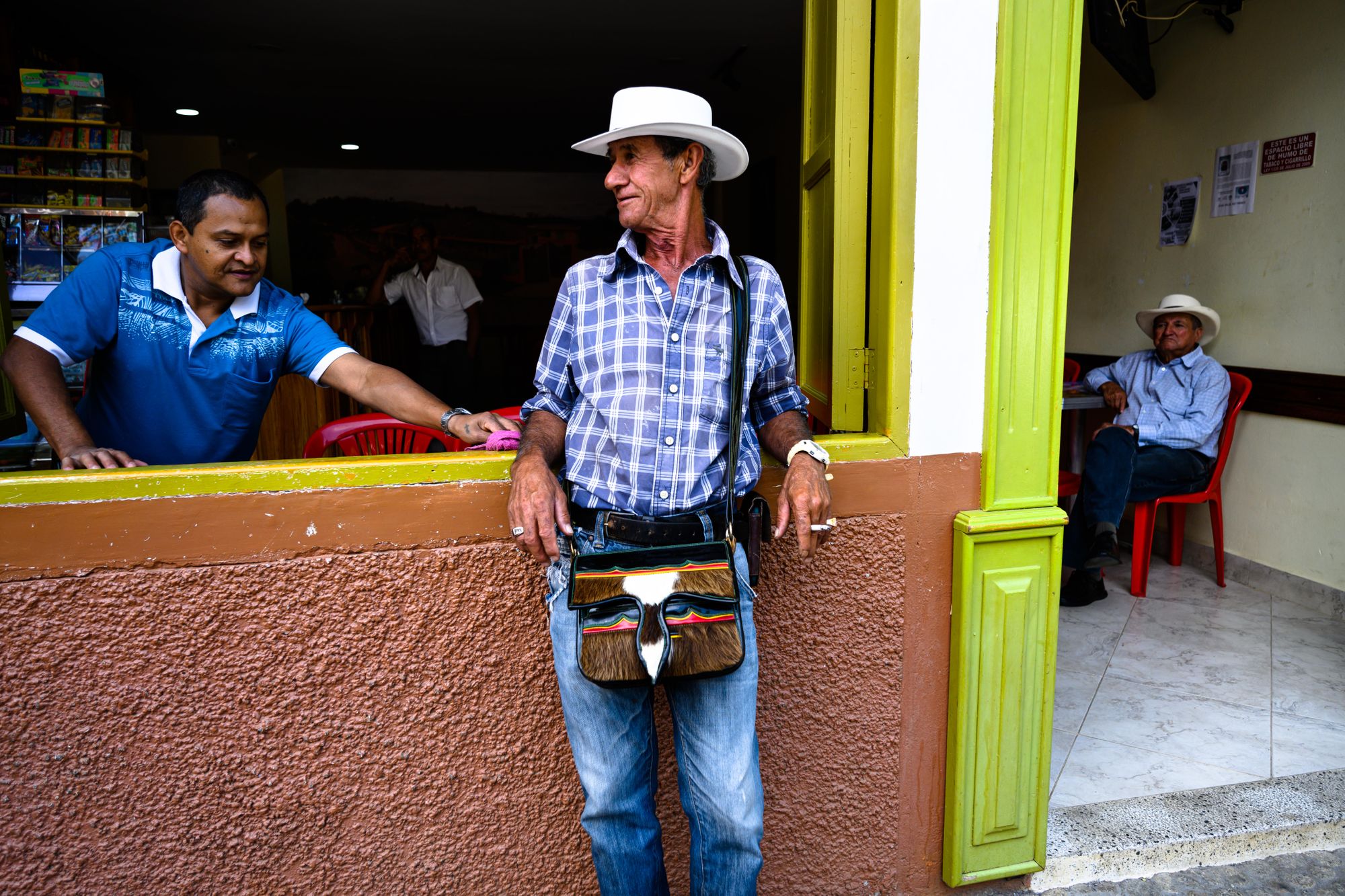
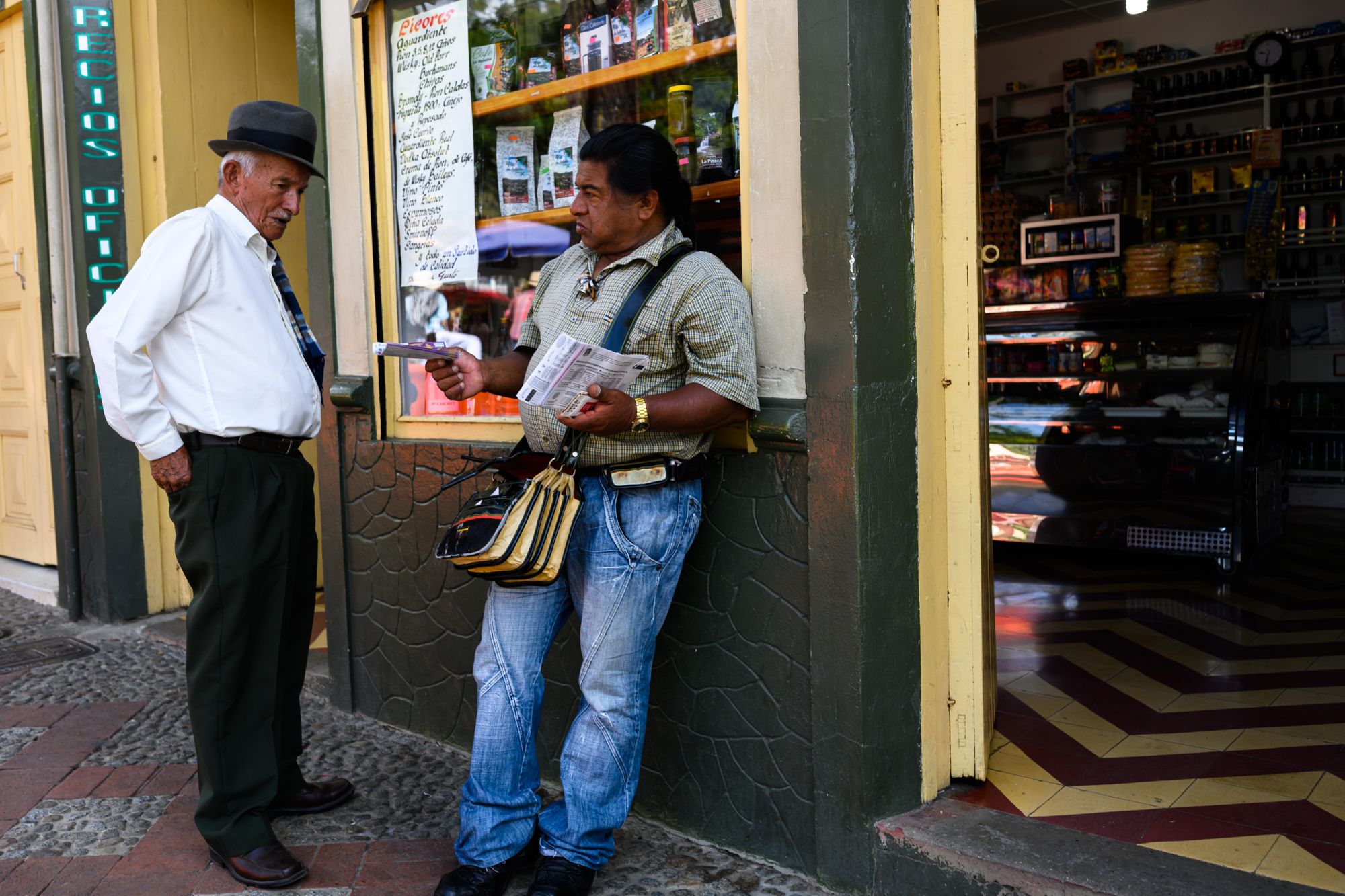
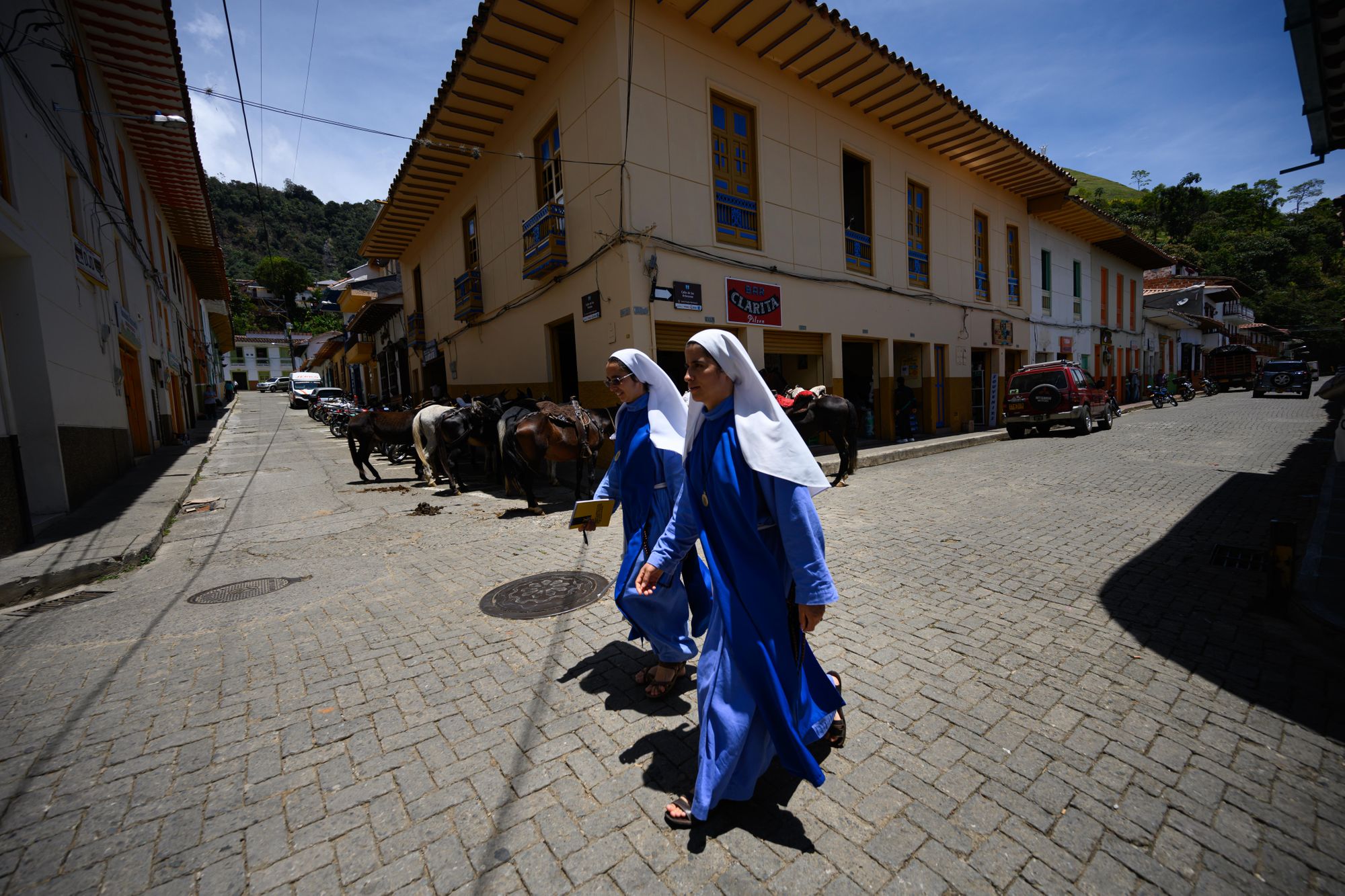
Evenings in the town are relaxed. Shops close down after sunset, with just a few cafes and bars remaining open later into the evening. Walking through the town at night we could not help but stop at a "Tango ... y algo mas" for a beer. You can hear the bar before you can see it. The friendly owner, Edgar Garcias, is a huge fan of the Argentinian musician Carlos Gardel and proudly plays his music all-day for the street to enjoy.
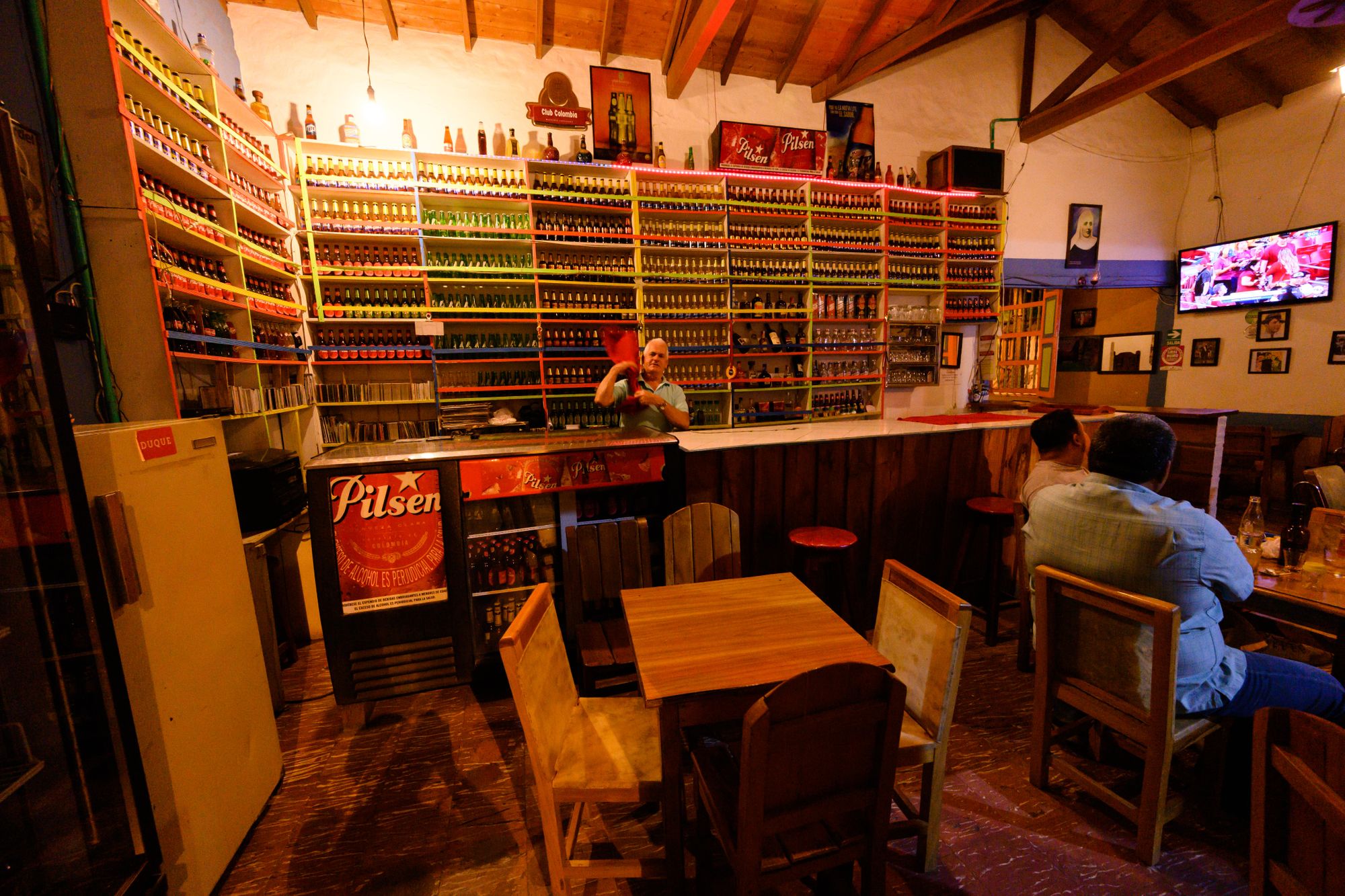

Once the final cafes and bars empty the locals fill up the plaza one last time to enjoy the last few street snacks that are still available before going home.
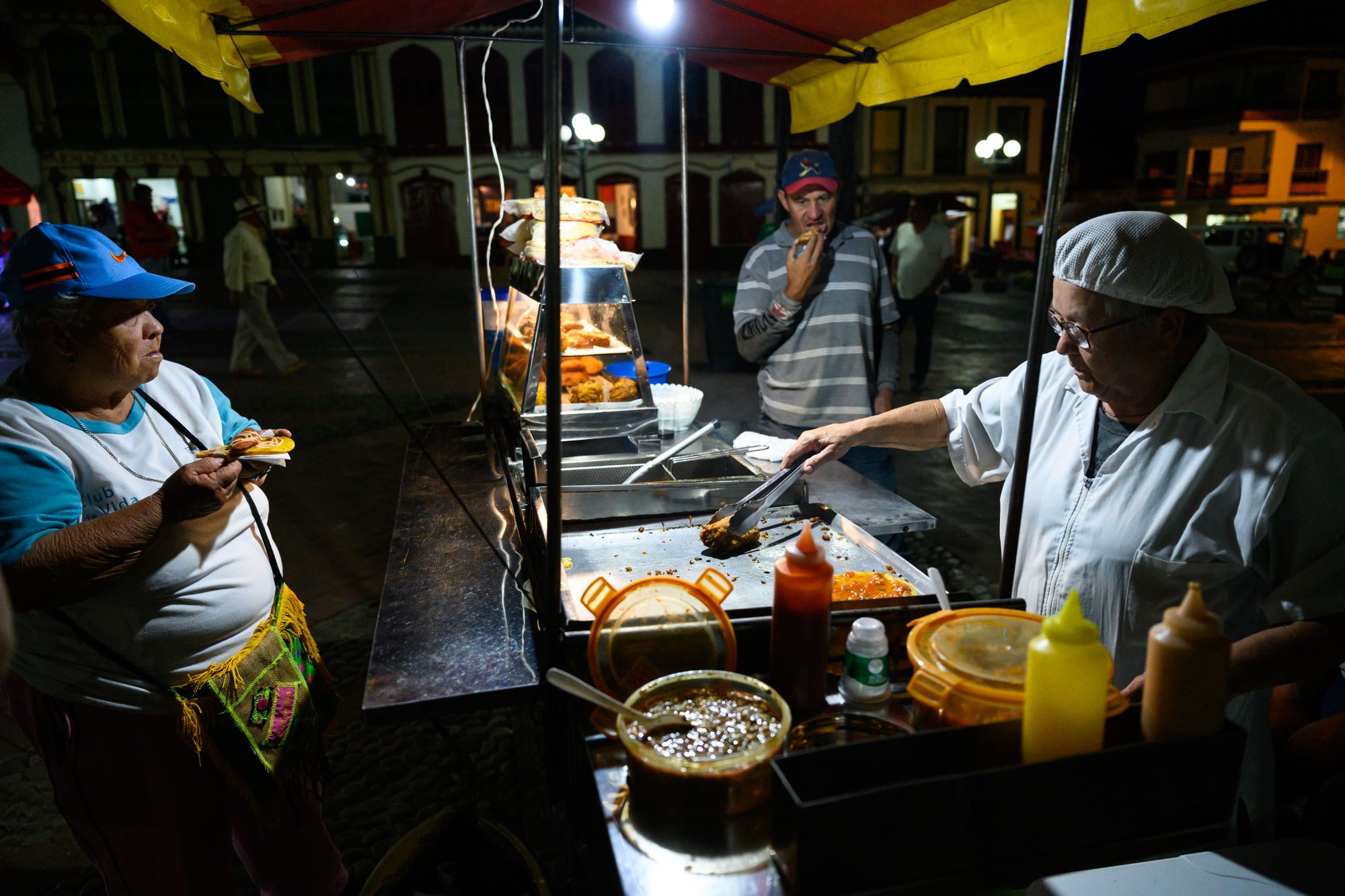

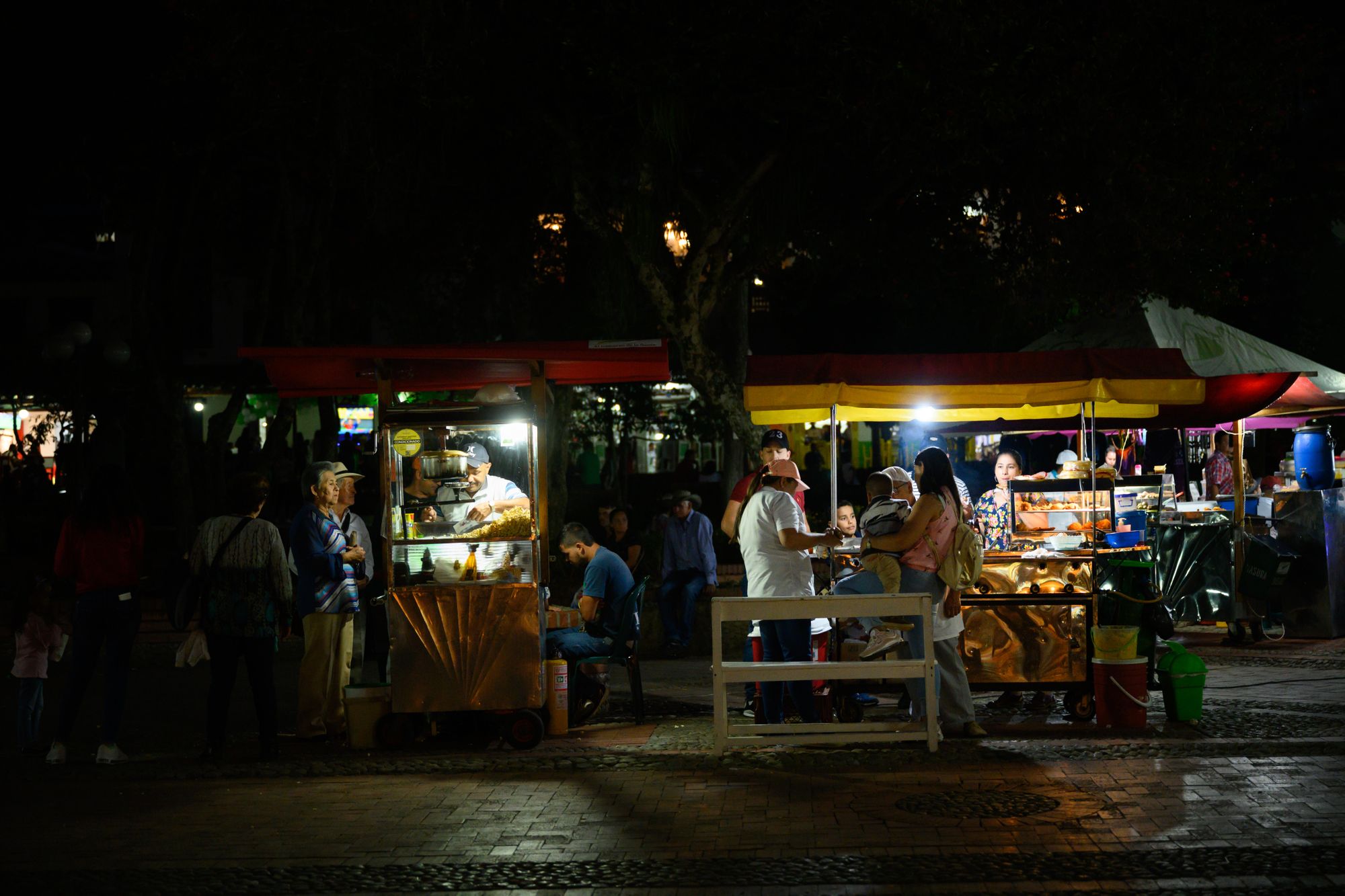
After five days in the town we contemplated its future. We had learned from a local student that a south-african company is set to start drilling the suronding hills for copper within the next two years against the wishes of the town. The activism of the town, which is present in the anti-mining billboards at the entrance to the town and the small flags "no to mining, yes to our water" hanging above the residents doorways, was silenced by the Colombian government passing a law that prevents the town from having a say in the drilling. We also wondered if the town will face any pressure from tourism. There was the 'first' hostal being set up in the town and the new roads being built - which I suspect is to allow the transport of heavy machinery and copper - will probably make it easier for tourists to visit the town too. We hope neither happens.
